Old Town of Segovia and its Aqueduct: Segovia is a small town in central Spain. Segovia was conquered by the Romans in the 1st century and became a strategic military base. The most famous sight of Segovia is an aqueduct, built by the Romans. The Roman aqueduct is well preserved and a famous symbol of Segovia. The Aqueduct of Segovia was probably built at the end of the first century and in the beginning of the second century. The aqueduct has 167 both single and double arches. The aqueduct reaches a height of 28 metres and is 728 metres long. Along with the Pont du Gard in France, the aqueduct of Segovia is one of the best preserved Roman aqueducts. Segovia has many monuments, among them the Alcázar. The Alcázar is an 11th century fortress, the Alcázar of Segovia was built on a steep rock high above the juncture of two rivers. The Segovia Cathedral is the last Gothic cathedral built in Spain, it was consecrated in 1768, it has about twenty richly adorned chapels. The historic town of Segovia is surrounded by medieval walls, one of the town gates was built in the Mudéjar style. Segovia is situated along the pilgrimage route of Santiago de Compostela. The old town of Segovia and its aqueduct gained the status as a UNESCO World Heritage in 1985.
www.werelderfgoedfotos.nl © Copyright World Heritage Photos
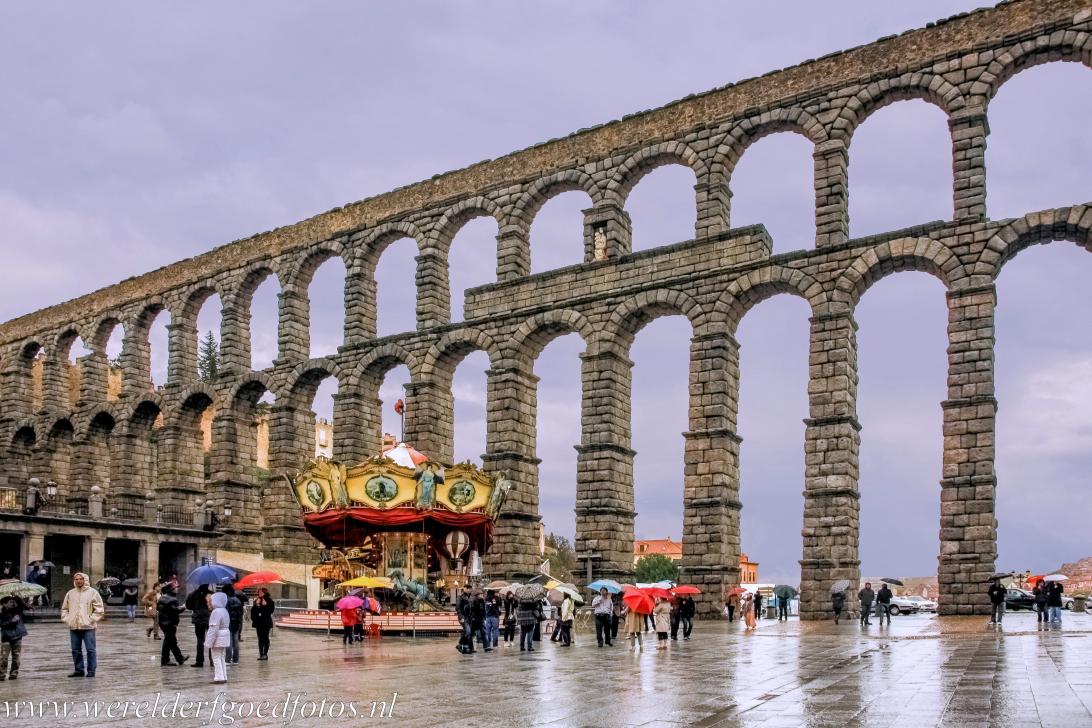
The Old Town of Segovia and its Aqueduct: The Roman aqueduct of Segovia is well a preserved monument and the most famous symbol of the town of Segovia. The aqueduct of Segovia was probably built at the end of the first century and in the beginning of the second century. The aqueduct consists of 167 single and double arches, it is 28 metres high and is 728 metres long. The Old Town of Segovia and its Aqueduct were declared a UNESCO World Heritage in 1985.

The Old Town of Segovia and its Aqueduct: The Roman aqueduct of Segovia is well a preserved monument and the most famous symbol of the town of Segovia. The aqueduct of Segovia was probably built at the end of the first century and in the beginning of the second century. The aqueduct consists of 167 single and double arches, it is 28 metres high and is 728 metres long. The Old Town of Segovia and its Aqueduct were declared a UNESCO World Heritage in 1985.
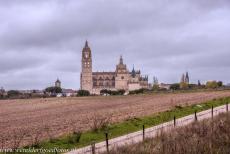
Old Town of Segovia: The construction of the Segovia Cathedral started in 1525, the cathedral was consecrated in 1768. Inside the Segovia Cathedral there are some twenty richly decorated chapels. The Segovia Cathedral is defined by style and chronology as a Late Gothic one, the last Gothic cathedral built in Spain. The cathedral is situated on the spot where Isabella I of Castile was proclaimed Queen of Castile.
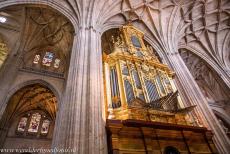
The Old Town of Segovia and its Aqueduct: The Baroque organ of the Segovia Cathedral. The cathedral was completed in 1577. The cathedral was built in the Late Gothic style, this style was already outdated elsewhere in Europe. The most important chapels of the Segovia Cathedral are the Chapel of San Andrés and Chapel of Piety. The Segovia Cathedral is the last Gothic cathedral built in Spain. The cathedral is known as 'The Lady of Cathedrals'.
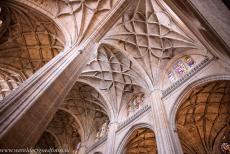
The Old Town of Segovia and its Aqueduct: The Segovia Cathedral has three Gothic vaults, they are 33 metres high, 50 metres wide and 105 metres long. The interior of the Segovia Cathedral is illuminated by the numerous stained-glass windows, made by Flemish and French glaziers in the 16th century. The Segovia Cathedral is situated in the Plaza Mayor in the centre of the old town of Segovia. The bell tower offers nice views over Segovia and the surrounding areas.
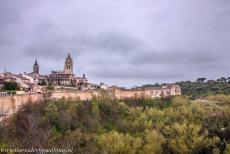
The Segovia Cathedral stands at the highest point of the Old Town of Segovia. The old town of Segovia is situated on a steep hill, surrounded by city walls, the walls are built mainly of granite blocks, the town wall encircles the old town of Segovia and has eight towers and five gates, the Santiago Gate was built in the Mudéjar style, the San Andrés tower is the gate into the historic Jewish quarter. The Old Town of Segovia and its Aqueduct are a UNESCO World Heritage.
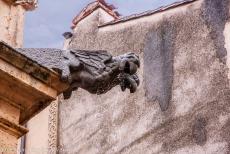
Old Town of Segovia and its Aqueduct: One of the gargoyles of Segovia Cathedral on a rainy day. The walls of the cathedral are adorned with a variety of gargoyles, including monstrous beastst. The gargoyles of Segovia Cathedral are made of granite. The gargoyles on Segovia Cathedral are believed to have been made to protect the building from evil spirits. The gargoyles are designed to act as a spout to channel rainwater from the roof and away from the walls.
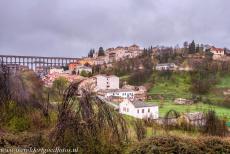
The Old Town of Segovia and its Aqueduct: Segovia is a small town in central Spain. Segovia has a long history, the town was conquered by the Romans in the first century AD and turned into a strategic military base. The Romans built an aqueduct, now the most famous sight of Segovia, it was part of a 17 km long aqueduct system that was built to transport water to Segovia. It is one of the best preserved Roman aqueducts, together with the Pont du Gard in France.
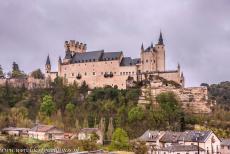
The Old Town of Segovia: Segovia has many monuments, among them the Alcázar. The Alcázar of Segovia is one of the most famous castles in Spain. The Alcázar was built on a steep rock in the 11th century. The Alcázar of Segovia towers high above the juncture of two rivers. In 1862, the Alcázar of Segovia was devastated by fire, it was rebuilt in 1882. The Old Town of Segovia and its Aqueduct were inscribed on the UNESCO World Heritage List in 1985.
